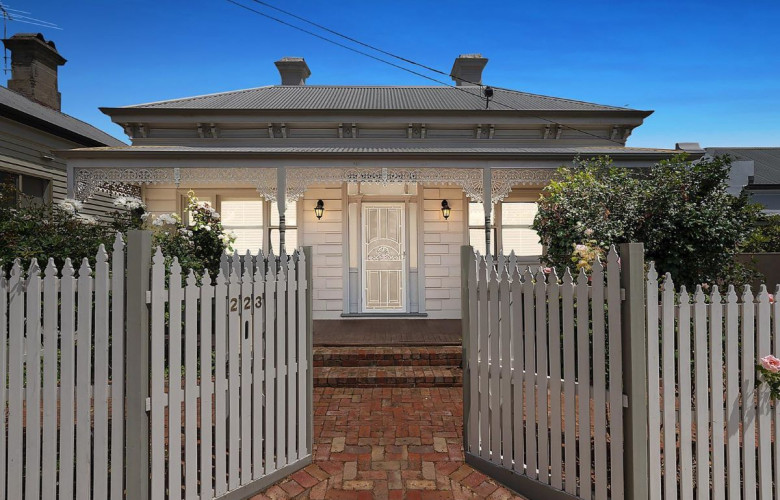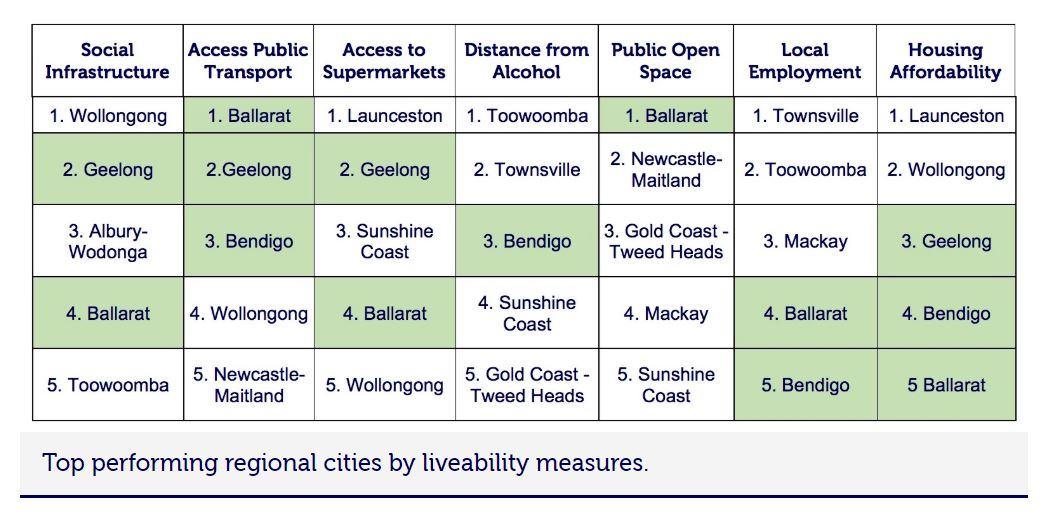Best places to live in Australia - we reveal them here
Contact
Best places to live in Australia - we reveal them here
Australia's most liveable regional cities have been revealed by the latest RMIT University research.
Victoria is home to Australia's most liveable regional cities according to new research by RMIT University, that for the first time maps health and liveability across the country’s 21 largest cities.
With Australia’s capital cities booming due to our growing population, lead researcher Dr Lucy Gunn from the RMIT Centre for Urban Research, said regional cities were often missing from the conversation because national liveability data has not been available.
The liveability measures used on Australia's regional cities included:
- Social infrastructure
- Access public transport
- Access to supermarkets
- Distance from alcohol
- Public open space
- Local employment
- Housing affordability
“One of the key benefits of living in a regional city is that people tend to live close to where they work,” said Dr Gunn.
“Ballarat and Bendigo performed well on this indicator, as well as access to public transport, which our research shows has major health and wellbeing benefits because it allows residents the opportunity to be more active.
“The benefit of looking at these liveability measures separately is you can see where each city is performing well and where improvements can be made.”
Source:RMIT
Ballarat performed best for access to public transport and public open space in the analysis and ranked in the top five for access to supermarkets, local employment and services, and housing affordability based on the summary measures.
Geelong ranked highly together with Bendigo performing strongly across four of the liveability measures.
In other states, the most liveable regional cities are Wollongong (NSW), Toowoomba (Queensland) and Launceston (Tasmania).
Geelong agent, Will Ainsworth of McGrath Estate Agents was not surprised his city was ranked so highly.
"Convenience, lifestyle and affordability are the three words I would use to sum up Geelong," said Mr Ainsworth.
"You can be from one side of Geelong to the other side in 15 minutes.
"With Melbourne becoming unaffordable for many people, Geelong looked good and as people moved here in droves they brought the good restaurants and good cafes."
Mr Ainsworth said people had a choice of house styles to buy from whether they preferred Victorian, California bungalow or even a brand new house.
223 Pakington Street, West Geelong for sale through Will Ainsworth of McGrath Geelong. Photo: McGrath
"I have a young family, wife and three kids and I drop my kids off in the same place I work," said Mr Ainsworth.
"I am not in the car driving all the time as everything is slo close."
With a median house price of $600k, Mr Ainsworth knows Geelong is attractive for its affordability as well as its locality.
"It is 20 minutes from the best beaches in the country and then up the road is Melbourne," said Mr Ainsworth.
Liveability tipping point
Dr Gunn said that some regional cities were at risk of making the same mistakes as the nation’s capitals.
“Ballarat, Bendigo and other similar-sized regional cities are at a tipping point,” she said.
“We can see this clearly in the maps and data that they are starting to look like larger cities.
“Equitable access to key infrastructure such as public transport, healthy food and community services is better in the central, more established areas. This declines as you move to the edge of the city.
“As we’ve seen in the capital cities, residents on the urban fringe have less access to these services which can impact their health and wellbeing.”
To maintain liveability in regional cities, Dr Gunn suggested careful planning for population growth and recommends avoiding more urban growth on the fringe.
“The good thing about our regional cities is there is still time to avoid the problems that come with our sprawling capital cities,” said Dr Gunn.
“There is an opportunity here for regional cities to capitalise on what makes them great and to recognise where they can improve to sustain their liveability for years to come.”
Drawing on over eight years of research findings, the data for each of the 21 largest cities in Australia is available now via the recently launched Australian Urban Observatory led by Dr Melanie Davern and developed by the RMIT Healthy Liveable Cities Group.
For more information on RMIT University's work on creating liveable cities, click here.
Similar to this:
Could Canberra hold the secret to successful decentralisation?







